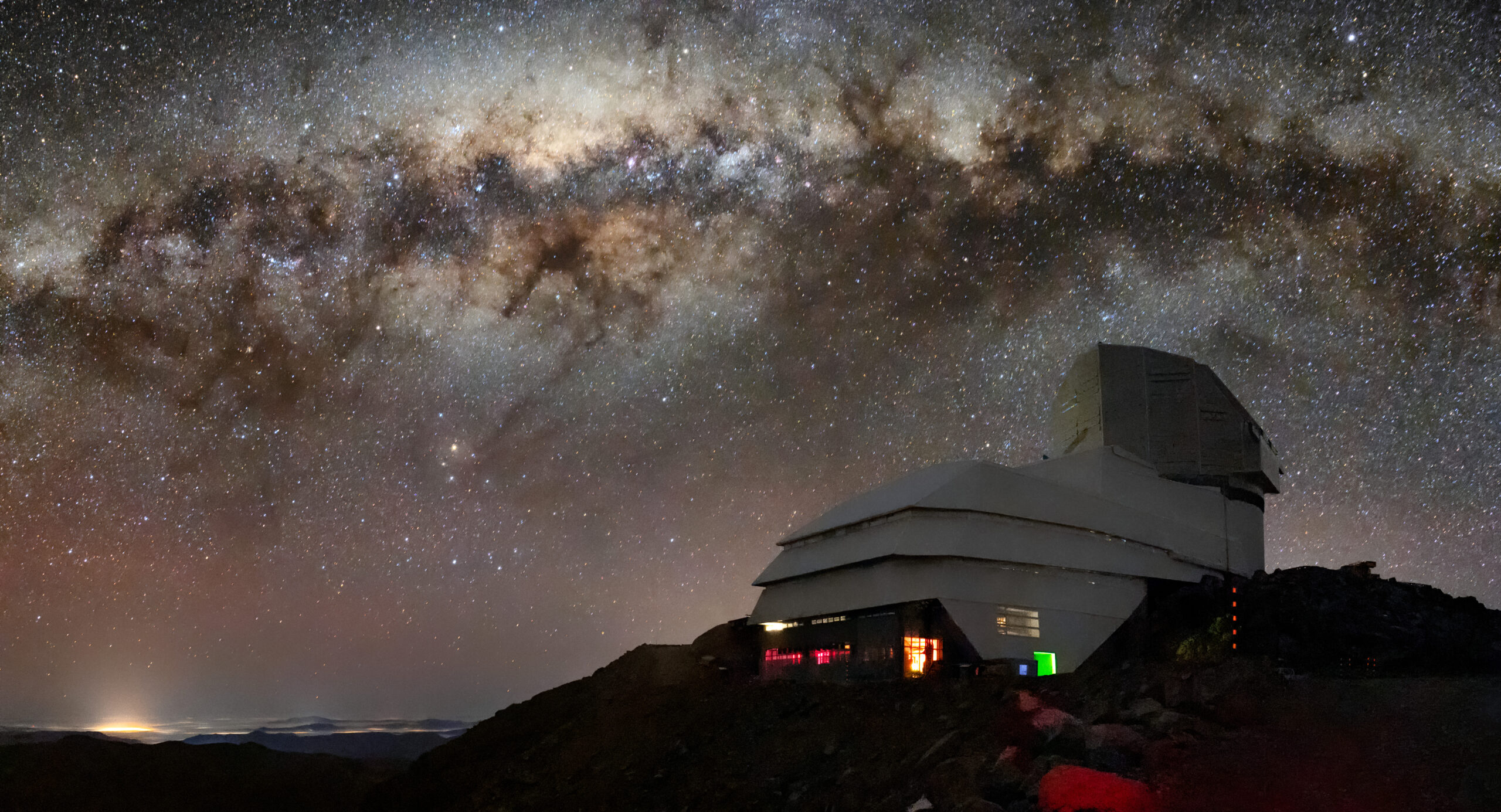
After three decades of searching, CATA astronomers discover molecular gas in the largest observed spiral galaxy
Malin 1 is a low surface brightness galaxy, i.e. very diffuse, and is located 1.206 million light-years away. The new results were achieved thanks to the high sensitivity of the ALMA telescope.
In the process of astronomical observation, the development of new instruments has helped to unveil long-standing mysteries that are, at the same time, a reward for the persistence and patience of scientists.
After more than three decades of fruitless attempts, molecular gas emission was detected for the first time in Malin 1, the largest spiral galaxy observed to date and one of the most emblematic diffuse galaxies. It is 1.206 billion light-years away and has a disk diameter of ~652 thousand light-years (nearly seven times the diameter of the Milky Way).
The team was composed of astronomers from the Center for Astrophysics and Related Technologies (CATA) and the Pontificia Universidad Católica de Chile Gaspar Galaz, Jorge González-López, Viviana Guzmán and Thomas Puzia, as well as Evelyn Johnston from the Universidad Diego Portales, also an associate researcher at CATA. They are joined by 15 other researchers from universities and research centers in France, Germany and the United States, including researchers from ALMA, ESO and NRAO.
Using the ALMA telescope, they were able to identify the emission of carbon monoxide molecules in the center of this galaxy, as well as tentative signals in three other regions of the disk. These findings allowed them to estimate the mass of molecular hydrogen (which is the gas that is generally capable of forming stars) and the surface density of the molecular gas.
This discovery is crucial because it provides the first direct evidence for the presence of molecular gas in one of the most enigmatic and largest spiral galaxies observed to date, which directly impacts our understanding of how stars form in galaxies with extremely low molecular gas densities, such as Malin 1. For models of galaxy formation and evolution, these results are valuable because they allow us to refine predictions about the structure and distribution of gas in these types of giant galaxies that are difficult to study.
Gaspar Galaz, who led this research that has been going on for more than 4 years, explains why it took so long to obtain these results. “Astronomers began observations to detect and map molecular gas in Malin 1 soon after its discovery, and over several years, in 1987, 1989, 1992, 2000, and 2022. Somewhat unexpectedly, however, these observations did not reveal the presence of molecular gas, using the carbon monoxide (CO) tracer, which is the most commonly used tracer in these studies. Then, the IRAM telescope at Pico Veleta was used several times, without results, in 1996 and 2000. The giant 100-meter radio telescope at Green Bank was also used in 2022, again without results. With the observations from ALMA we were able to detect a signal in the center of the galaxy. The fundamental difference lies in the high sensitivity of ALMA, the low noise that is possible to obtain and the precision in the calibration of the signal. The ALMA site, which is exceptional for millimeter-wave observations, contributes to this,” says Galaz.
By integrating data on the HI (atomic hydrogen) mass of Malin 1, they were able to establish a very low atomic molecular gas mass ratio, indicating a very low fraction of molecular gas in this galaxy, in stark contrast to its large and homogeneous atomic gas content.
This study was recently published in The Astrophysical Journal Letters under the title “First detection of molecular gas in the giant low surface brightness galaxy Malin 1”.
Future studies
These galaxies have such a low density of stars that their surface brightness is lower than the background of the night sky. In them, it is difficult to detect molecular gas, which is key to star formation, and therefore they present many challenges.
Although three tentative regions of CO emission were seen in the disk, their nature is uncertain, as two of them have very large offsets relative to the velocity of Malin 1, suggesting that they may be associated with other objects or phenomena.
The conclusions reached by Gaspar Galaz and his collaborators will be the basis for further research. “Next we will propose to study with higher resolution the molecular gas in the areas where it was detected. It would also be interesting to map other areas in the galaxy where we expect new data from the VLT with MUSE in 2025,” concludes the CATA astronomer.
Recent news
-
 Publicado el: 04/07/2025CATA researchers among the best in Chile according to international ranking Research.com
Publicado el: 04/07/2025CATA researchers among the best in Chile according to international ranking Research.com -
 Publicado el: 30/06/2025CATA Director strengthens ties in her second institutional tour
Publicado el: 30/06/2025CATA Director strengthens ties in her second institutional tour -
 Publicado el: 30/06/2025CATA celebrated Asteroid Day 2025 at the Pueblito de Las Vizcachas Park
Publicado el: 30/06/2025CATA celebrated Asteroid Day 2025 at the Pueblito de Las Vizcachas Park -
 Publicado el: 26/06/2025Vera C. Rubin: the telescope that watches the sky and anticipates the future of astronomy
Publicado el: 26/06/2025Vera C. Rubin: the telescope that watches the sky and anticipates the future of astronomy -
 Publicado el: 25/06/2025CATA researchers appointed as Full Professors at Universidad Andrés Bello
Publicado el: 25/06/2025CATA researchers appointed as Full Professors at Universidad Andrés Bello
Categories list
- Acknowledgments 19
- Astrobiology 5
- AstroCluster 1
- Black holes 13
- Corporativo 49
- Cosmology 4
- Descubrimientos 19
- Disclosure 46
- Exoplanets 13
- Extension 4
- Galaxies 17
- Galaxies formation 2
- Inter y Transdisciplina 2
- Local Universe 13
- Publications 5
- Sin categorizar 31
- Solar System 11
- Stellar formation 6
- Technology 9
- Technology Transfer 12


